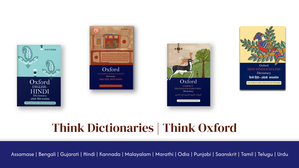New Delhi, Oct 11 (VOICE) The Oxford University Press (OUP) on Friday announced the launch of a trilingual Sanskrit-Hindi-English dictionary to make the Sanskrit language accessible to learners across the globe. This aligns with OUP’s vision of advancing knowledge and learning in unison with the Ministry of Education at the same time increasing the number of languages covered in the bilingual dictionaries India portfolio to 13 (which includes 9 Classical Languages).
Oxford dictionaries are now available in Sanskrit, Bengali, Assamese, Kannada, Malayalam, Odia, Tamil, Telugu, Marathi, Gujarati, Punjabi, Urdu, and Hindi.
“Oxford University Press is dedicated to the preservation and enrichment of languages, fostering a global commitment to linguistic diversity, and knowledge dissemination. This trilingual dictionary represents a significant milestone in our commitment to promoting language learning and our cultural heritage,” said Sumanta Datta, Managing Director, OUP India.
“It will be a valuable resource for students embarking on the journey of learning Sanskrit, in keeping with the NEP 2020 and NCF 2023 guidelines,” he added.
The new dictionary was published in collaboration with Uttar Pradesh Sanskrit Sansthanam (UPSS).
The new Oxford Sanskrit-Hindi-English dictionary includes over 25,000 words carefully chosen for the learners of Sanskrit keeping in mind the relevance of words keeping in mind the vision that every Sanskrit student would be conversant and fluent in simple standard Sanskrit 10 years from now.
In addition, the OUP also announced the release of three other dictionaries: Compact English-English-Urdu Dictionary, Mini Hindi-English Dictionary, and English-Hindi Dictionary.
Earlier this year, OUP launched the English-English-Assamese Dictionary and the Mini English-Bengali Dictionary.
Sanskrit gained its ‘Classical’ status in 2005. Linguists proposed that both Sanskrit and many European languages trace their roots back to a common ancestor known as Proto-Indo-European.
This theoretical language is believed to have been spoken thousands of years ago, acting as a linguistic blueprint for diverse language families spread across continents.
The linguistic connections between Sanskrit and European languages also offer insights into migration patterns, cultural exchanges, and the evolution of languages over millennia transcending time and borders.
–VOICE
rvt/














Leave a Reply